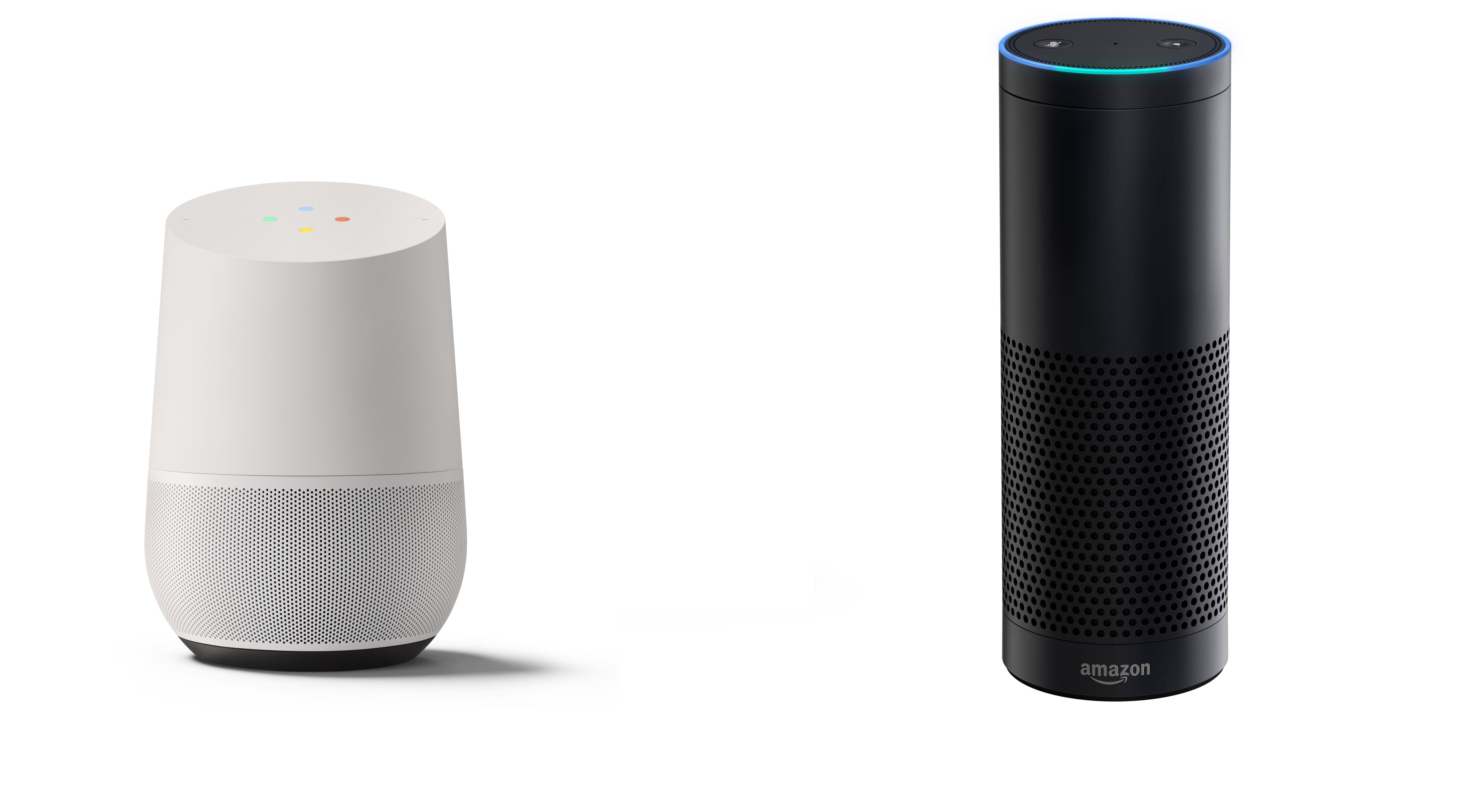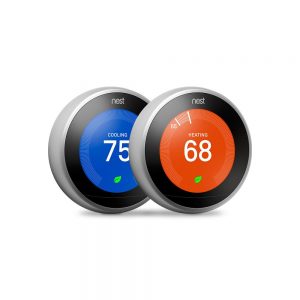Did you remember to lock the front door? Is the oven still on? Maybe you forgot to turn the thermostat down before your trip and while you were taking it easy, your AC was working overtime. These are problems we’ve all come across and they usually result in a frantic trip back home. Thanks to an array of smart home devices, these annoyances seem to be a thing of the past. Nothing is ever that simple, though, and there is often a price to progress. By adopting these new gadgets, what concerns await us in the homes of the future? Let’s take a look!
Companies like Samsung, Weemo, and Nest have developed a seemingly endless catalog of smart devices that allow us to remotely control almost anything in our house, and Google and Amazon have created tools to help us manage everything.

The SmartThings line of products by Samsung features lights, thermostats, door locks, refrigerators and even ovens controlled from your phone. You can include different varieties of motion sensors or door and window sensors in your setup to trigger lights and even provide updates on suspicious activity while you’re out and about. Both Weemo and Samsung have special power outlets, which, in addition to Wi-Fi control, can send you weekly or monthly power usage reports. Better control of your appliances and lights means a more energy efficient home and comfort in knowing that your oven isn’t going to burn your house down while you’re on vacation.
Speaking of energy efficiency, running our air conditioner can be one of the largest uses of energy in our homes, especially here in Texas. The Nest Learning Thermostat is another smart home innovation that can help us easily manage our precious cool air. After about a week of observing your habits and preferences, it will program itself! It knows when you are out of the house and automatically turns itself down. The app allows you to check on and control it from anywhere and gives you a history of its energy usage.

Now that you have all these great gadgets hooked up to your internet, you need a way to easily manage them all. No problem. While you’re in your house, the Google Home and Amazon Echo assistants give you voice activated control over everything, as well as access to music libraries and entertainment, calendars and reminders, and search engine capabilities. Both products are designed to interact with hundreds of devices, including everything previously mentioned in this article and tons more.
There are a lot of great products like this on the market and much more on the way. However, as a company that prides itself on security in technology, we at Pretect wouldn’t be doing our jobs if we didn’t warn you about the potential danger inherent in these devices. For every frontier we push for the sake of convenience, like remotely controlled washing machines and ovens, we create opportunities for those who would do us harm to pry their way into our lives and homes.

One of the most glaring concerns with these products is that many have little to no security, and those that do often require additional setup steps beyond what is available in factory default settings. Some just simply aren’t complex enough from a computing standpoint to adequately be secured in the first place. We’ve (hopefully) grown more accustomed to the idea of securing our computers and phones, but the idea of having to keep our lights, doors and perhaps even refrigerators under lock and key is quite new but equally as important. Because it is connected to your network, a hacker could turn your unprotected fridge into a Trojan Fridge and gain access to your otherwise secure Wi-Fi.
Once a hacker has access to all of your smart things, they can use them for all sorts of no good. Last year, a large internet traffic company, Dyn, was hit with a DDoS (Direct Denial of Service) attack that brought the internet to a crawl for many. The individuals responsible utilized thousands of smart home appliances to help perpetrate the attack unbeknownst to the folks who owned them.
Smart home appliances also generate boatloads of personal information, and I’m not just talking about your phone and Social Security numbers. Devices like Nest have motion sensors and learn when you’re typically around and when you’re out and for how long. That’s creepy. While useful for regulating your home’s temperature, it also happens to be incredibly useful information for someone who might want to rob your house.
Perhaps most disturbing are the few security oversights that could give ne’er-do-wells physical access to your home. Yes, it is possible, and in some cases even easy, for your smart home door lock to be hacked. In this video, these programmers show you how a simple exploitation of an app can give you the PIN to the Samsung’s SmartThings door lock.
So what can one do? Well, until manufacturers beef up the security each device has individually, there are solutions like physical firewalls that you can install to protect your network. CUJO is one such firewall and can protect up to 50 different smart devices in your home by acting as a barrier between your devices and the outside world. You should also do research before you buy a device and understand its security limitations. Once it’s out of the box, make sure any password that might allow access to your network has been changed from the factory default. If you know that a device in your home is a potential risk, look into products like CUJO that can help seal the hole.
We hope you found this article helpful! As always, if you have any further questions about this blog or any IT related inquiries, feel free to get in touch with us! Stay safe, stay Pretected.




